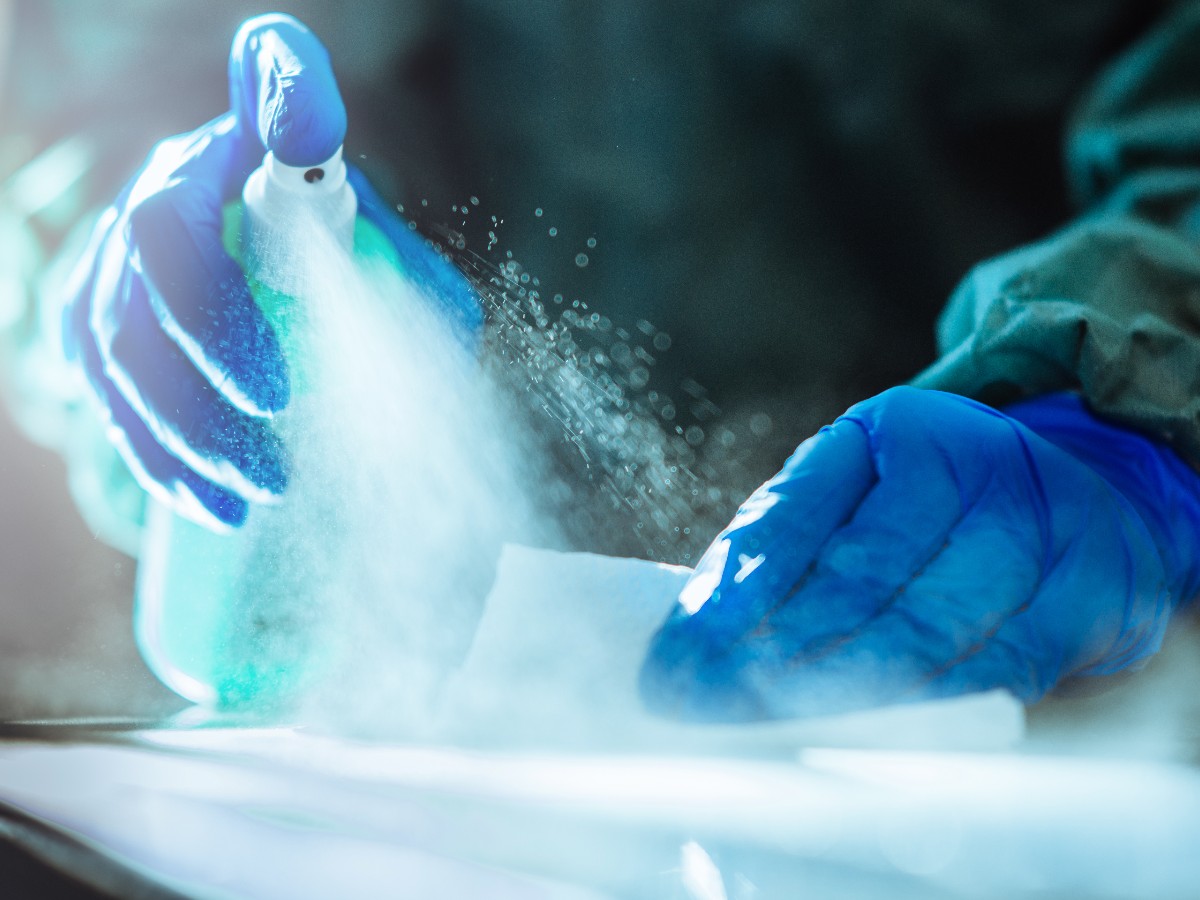Healthcare facilities are epicenters of the COVID-19 pandemic, where the sickest individuals are hospitalized and monitored for days or sometimes weeks. The potential for transmission and infection at these locations is high—meaning the need to protect staff and well visitors is even higher. In turn, hospitals have gone to great lengths to keep their spaces clean and sanitized.
While the pandemic has raised awareness of effective healthcare cleaning and sanitization benchmarks, healthcare settings have had high standards for these processes for a long time. Facilities of all sizes have maintained detailed cleaning regimens, generally built to follow prepandemic recommendations from the Centers for Disease Control and Prevention1 (CDC). Some of these recommendations include advice to:
- Designate a cleaning program manager.
- Appoint an equipment manager, who maintains a master list of supplies and how to clean them properly.
- Ensure strong communication regarding expectations across the organization.
- Conduct routine inspections and regular inventories.
Throughout the COVID-19 pandemic, many of these basics have stayed the same—however, the level of cleaning, attention to detail, and frequency of cleanings have become far more rigorous.
Modernizing Healthcare Cleaning Protocols for a New Age
A report in the Health Cleaning Forum2 estimates that 50% to 70% of healthcare-associated infections (HAIs) spread through hand-to-hand contact. That leaves 30% to 50% of HAIs potentially linked to environmental transmissions, such as surfaces, devices, water, or air quality—underscoring the importance of maintaining a clean healthcare space.
In fact, a small study published in JAMA3 in 2020 demonstrated just how impactful routine cleaning can be against fighting disease. In isolation rooms of three patients who tested positive for COVID-19, viral RNA was detected on nearly all surfaces tested before cleaning. After a routine cleaning, no viral RNA was detected.
Here are three ways hospitals are keeping patient care areas, such as treatment rooms and waiting rooms, as safe and clean as possible during the pandemic.
1. Daily Cleanings
The CDC4 advises that once-daily cleanings should be sufficient for most areas, with a few exceptions. Facilities may decide to clean more frequently if the space:
- Is a high-traffic area, with a large number of people.
- Is poorly ventilated.
- Does not provide access to handwashing or hand sanitizer.
- Is occupied by people at increased risk for severe illness from COVID-19.
Disinfection isn't always necessary; though, if a known COVID-positive individual was present in a treatment or waiting room, that space should be cleaned and disinfected as soon as possible.
2. Air Turnover
Before cleaning and sanitizing an area after a COVID-19-positive patient, however, the CDC5 recommends that staff wait for air changes in the space. This gives aerosolized virus particles time to dissipate. A thorough changeover may take anywhere from 10 minutes to more than 3 hours, depending on a facility's ventilation, but the CDC recommends waiting as long as possible before entering the room to clean.
A study published in JAMA6 reports that some facilities also use ultraviolet light and hydrogen peroxide vapor to disinfect potentially contaminated air; these tools are especially useful when COVID-19-positive patients receive aerosol-generating procedures, such as surgery or intubation.
3. Effective Cleaning Agents
The US Environmental Protection Agency7 (EPA) vetted and published a number of disinfectants able to kill COVID-19 transmission germs on tabletops, chairs, and other high-touch areas. Healthcare organizations should use this list, called List N, to procure the most effective cleaning supplies against COVID-19 for surfaces and devices.
Most medical devices and clinical accessories already come with manufacturer-approved cleaning agents—or guidance regarding which agents to use—in order to prevent damage to the product. GE Healthcare took this industry-standard practice one step further and cross-referenced recommended cleansers8 with EPA's List N to ensure that any recommended agents prevent both product damage and COVID-19 transmission.
Putting Pandemic Planning First
In addition to scheduling frequent cleanings and using appropriate agents, healthcare facilities have implemented specific guidelines for staff to help reduce the spread of disease in the face of the pandemic. Most hospitals limit the number of medical providers permitted in operating or treatment rooms to only essential personnel. Further, environmental services staff in charge of cleaning patient care areas should have access to appropriate PPE and eye protection such as gowns, N95 masks, and face shields at all times.
Adapting to new routine cleaning protocols in these ways can be demanding on staff, particularly as patient cases ebb and flow. However, cleaning is key to infection prevention. As the pandemic stretches on, a combination of regular cleaning schedules and updated guidance from the CDC can help establish and maintain transmission-safe healthcare cleaning protocols for both staff and patients.
REFERENCES
1 https://www.cdc.gov/hai/prevent/resource-limited/cleaning-programs.html
2 https://aricjournal.biomedcentral.com/articles/10.1186/s13756-018-0420-3
3 https://www.ncbi.nlm.nih.gov/pmc/articles/PMC7057172/
5 https://www.cdc.gov/coronavirus/2019-ncov/hcp/infection-control-recommendations.html
6 https://jamanetwork.com/journals/jama/fullarticle/2766821
7 https://www.epa.gov/coronavirus/about-list-n-disinfectants-coronavirus-covid-19-0
8 https://cleaning.gehealthcare.com/

